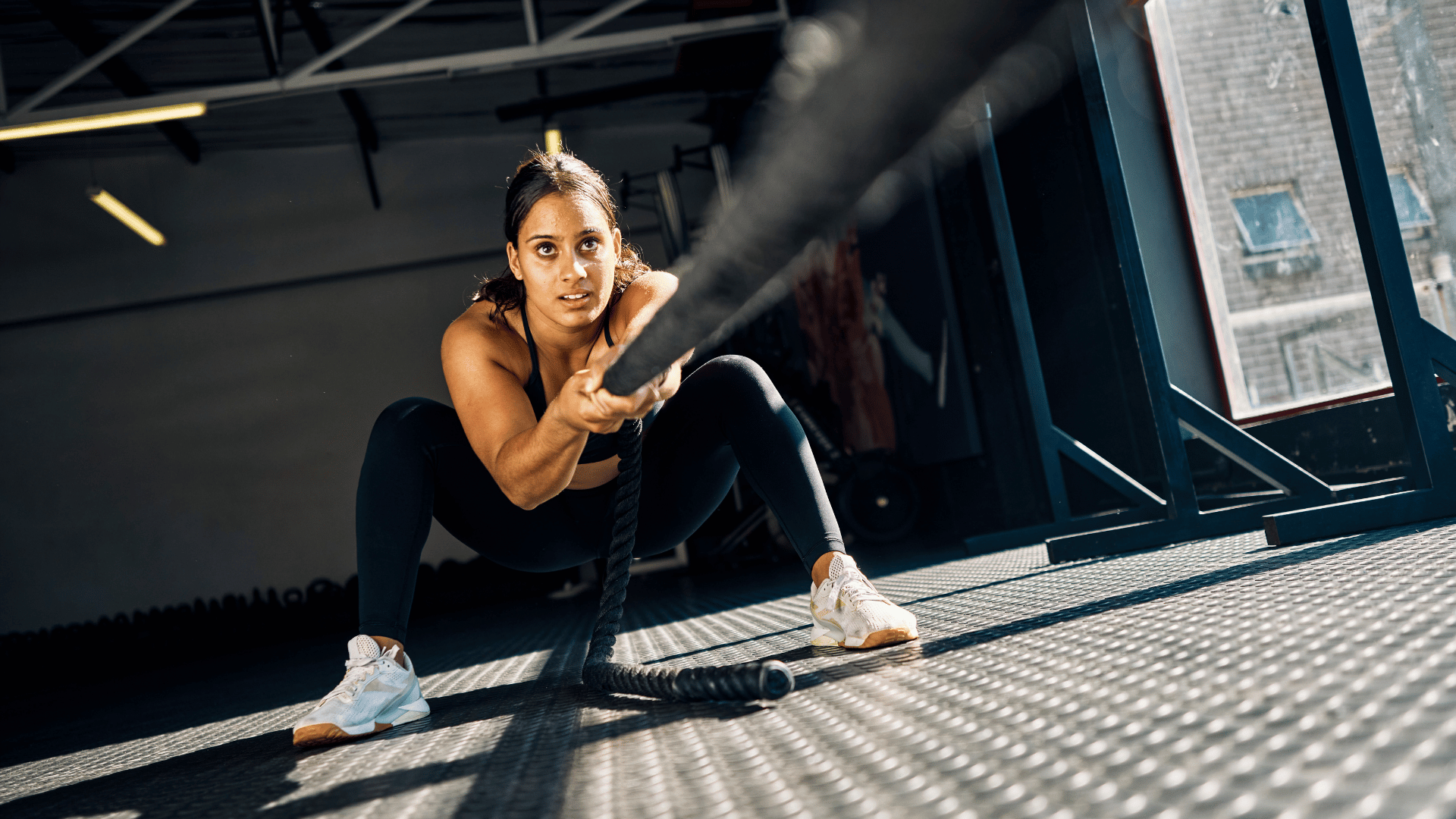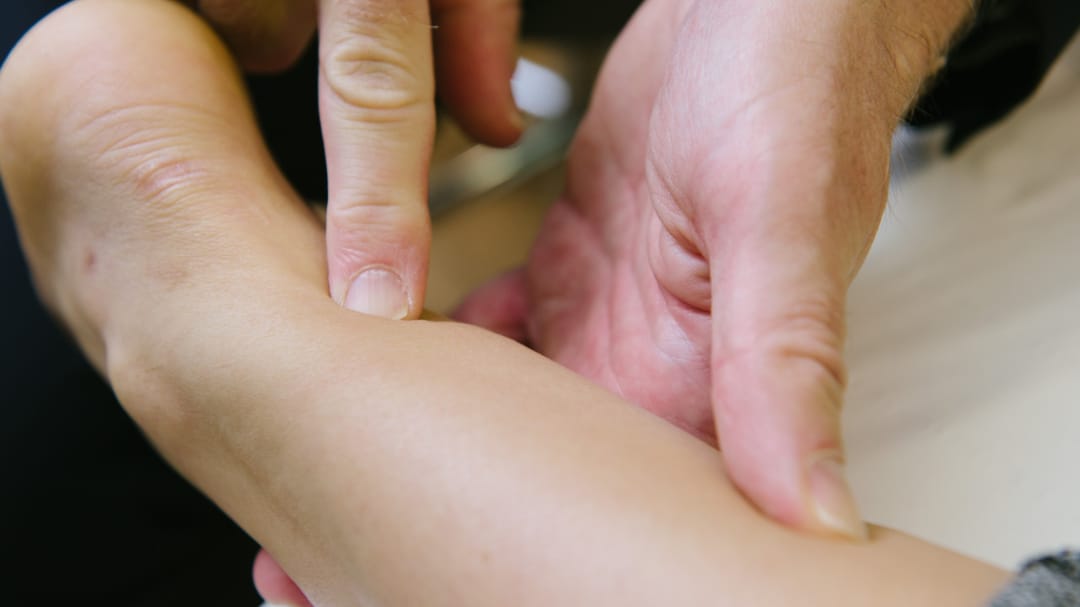Everything You Need to Know About Hyrox

Andy Page
Clinic Manager & Strength and Conditioning Coach
- 20 June, 2024
- Hyrox
- Exercise
- Running
- 5 min read
Everything You Need to Know About Hyrox

This physical and mental challenge that incorporates running, rowing, sled pushing and more, will challenge you to your limits, testing your strength and resilience. Find out what it all entails, and how you can prepare yourself to be race-ready on the day.
The recent surge in interest has led to Hyrox taking over the London fitness scene.
We have seen increasing numbers of patients in our clinics in search of performance, injury relief and everything in between, asking questions like, ‘What is Hyrox?’, ‘Where did it come from?’, ‘How do I train for it?’, and ‘What are the injury risks?’.
Well, wonder no more. We answer all these questions and more so you can be as mentally and physically prepared as possible to take on this popular challenge, especially for this year’s Hyrox London!
What is Hyrox?
Founded in Hamburg in 2017 by Christian Toetzke and Moritz Furste, many of the principles of Hyrox have evolved from Crossfit and saw the increasing trend of fitness being a sport in itself.
Hyrox bills itself as a ‘Race for Every Body’ a series of eight simple exercises, interspersed with 1km of running each time.
The time to complete all eight runs and eight exercises becomes your finish time. Generally speaking, elite athletes tend to complete it in a little under an hour and non-elite athletes anywhere after the hour mark.
The goal is to improve your time each race and everyone completes the same challenge with differences in weight for male, female and professional competitors.
How do I train for Hyrox?
Think of it as a multifaceted event. The need to train for strength, high intensity interval work (HIIT) and running are all as important as one another — not neglecting mobility and flexibility.
Strength Training
Forming a base of compound upper body, lower body and core strength should be the focus of training early in the preparation. Similar to Crossfit, it is important that you have a good base of strength before doing the necessary exercises and movements under fatigue and at speed.
HIIT Training
Working at high intensity with little rest is taxing on the body and the capacity to do so takes time to build in a safe and progressive way. Starting with bodyweight circuit training up 2 – 4 minutes duration with 2 minutes rest is a good way to begin, progressively increasing interval time and reducing rest time.
Run Training
Sorry non-runners, there’s no hiding from this when you have to run 8km! Start by building up a base of steady running before looking to run 1km at speed. Over time, incorporating gradually shorter running intervals and increasing the speed can build your running capacity and your speed.
Mobility and Flexibility Training
Many of the movements require specific ranges of motion. Developing this in a controlled environment will make a huge difference to reducing risk of problems or injury when training and on race day.
What are the injury risks with Hyrox?
As with any sport or activity, there is a risk of injury so conditioning your body to what you’re asking of it is so important. With Hyrox and other running or fitness-based sports, we tend to see three main types of injury:
1. Overuse Injuries
Often people with little training experience, who have recently gotten into Hyrox, tend to pick up overuse injuries because they’re not doing the appropriate training, or sometimes resting, to condition their bodies correctly.
2. Chronic injuries
These injuries tend to present in long term Crossfit athletes who’ve in the recent past taken up Hyrox as well as a natural progression, who have a reoccurring injury or condition and need help managing it so they can continue to do the sport they love.
3. Acute injuries
These injuries are new and sustained during training or competition. They tend to include ankle sprains, twisted knees, pulled muscles and other common injuries.
But the main injuries that we see in Hyrox athletes are a mix of tendinopathies; achilles, patella and rotator cuff being the big three areas. This is often because the athletes have significantly increased their exposure to high force and velocity training when doing strength and HIIT training, as well as high speed running.
Some of these also fall into the chronic injuries category and are joined by athletes with long term injuries around their lower backs and hips such as discogenic pain, facet joint pain and hip joint pain including Femoral Acetabular Impingement (FAI).
The acute injuries we see are as varied as any sport. For example, we have helped rehabilitate those with conditions such as shoulder dislocations, tendon tears, ankle sprains, muscle spasms, strains in the lower back, and knee injuries, such as meniscal tears.
As important as it is to be aware of the risks, don’t let this put you off. With the right training and conditioning, you will greatly reduce the risk of sustaining an injury and you’ll have fun along the way too.
How to avoid injuries when Hyrox training
1. Check for any areas of weakness
The first thing we recommend is to get an assessment with a Physiotherapist to identify areas of weakness, especially if you have a long term or reoccurring injury. A sport or musculoskeletal physiotherapist can help point you in the right direction to managing these through your Hyrox training so you give yourself the best chance of avoiding an injury slowing you down or stopping you altogether.
2. Train effectively and efficiently
Regarding your training, the best advice source and advocate to support you throughout the journey is a Strength and Conditioning Coach. Together, you can build your evolving training plan around all your other commitments, learn how to train effectively and efficiently, how to dodge any potential injuries that come from a large increase in exercise load and intensity and ensure your techniques are correct because poor form can exacerbate old injuries and even cause new ones.
3. Seek expert advice
With the right training, we are confident that you won’t pick up any niggles or injuries, however, they are a part of sport, and of life. So if an injury comes knocking on your door, the absolute first point of call should be a Sport & Exercise Medicine Consultant, as they will be able to correctly diagnose the injury and get you promptly on the right path to recovery, with appropriate injury management, hopefully meaning race day is still a reality.
4. Rest and refuel
Finally, don’t neglect rest, recovery, sleep and nutrition in your training, especially when you are new to Hyrox. Illness or injury will derail even the best intentions so proactively looking after your general health will significantly help this.
Sporting events like Hyrox do so much for your physical and mental health and we are always in awe of the patients we see who compete in these events for their achievements. But Hyrox is so much more than the physical challenge, it’s also a community of supportive and incredible athletes who want to see each other succeed.
So whether you’re thinking about taking part in a Hyrox event, or currently training for one, we hope you enjoyed our dive into the world of Hyrox from a sports medicine perspective, and for those currently training, we wish you the best of luck for race day and happy sweating!
Read our blog on 3 Steps to Avoid Injuries When Training for HYROX.

Advice
Over the last 20+ years our experts have helped more than 100,000 patients, but we don’t stop there. We also like to share our knowledge and insight to help people lead healthier lives, and here you will find our extensive library of advice on a variety of topics to help you do the same.
OUR ADVICE HUBS See all Advice Hubs

